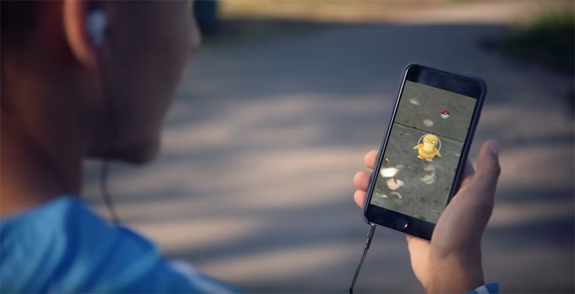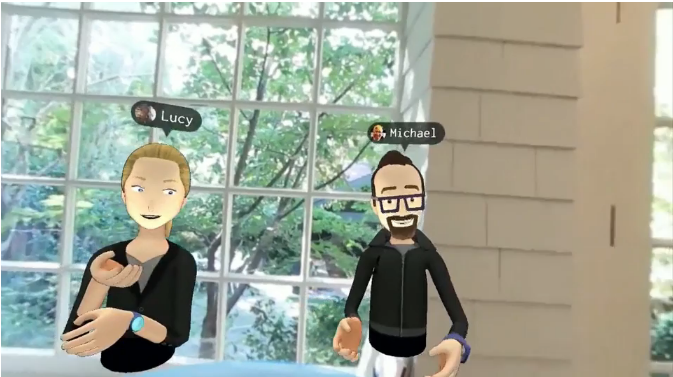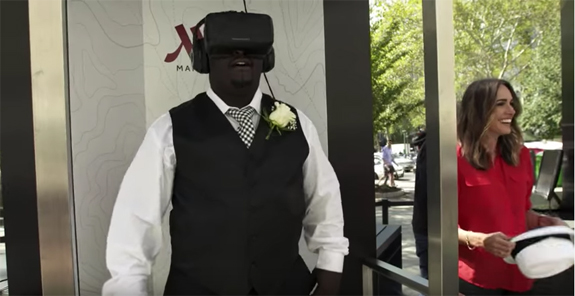It seems like the hot new topic everyone is talking about is Virtual Reality. I’ve been digging into the question of why virtual immersion matters. Many of the articles I have been reading have been insightful, but often abstract, focused on where we will go rather than where we are. It is difficult to get a grasp of the meaningfulness of something so important without really getting a look at it in a practical way. What really is virtual reality? What is augmented reality? Why does it matter for your business, what does this technological and social phenomenon offer us now?
Virtual Reality vs. Augmented Reality
When we think of virtual reality, the first thing we visualize is the iconic headset. Virtual reality goggles are the pinnacle of this industry, with companies such as Apple, Google, and Facebook jumping on the VR goggle train, but many of us also use the phrase “Virtual Reality” as a blanket term for many other types of virtual experiences. Experiences such as 360 video, smart glasses, personal viewers, and of course — Augmented Reality.
 July 2016 saw a huge flux of consumers downloading a game called Pokemon Go. If you haven’t tried it yet, this app allows you to hold up your phone and see an animated Pokemon as if it were really in front of you. This game takes your current physical environment and supplements it with a virtual monster and interactions with locations and other people, allowing you to add the virtual to your reality with graphics. These types of experiences are not considered 100% immersive and often are intended to supplement rather than replace reality, and that is the key difference between Virtual Reality and Augmented Reality.
July 2016 saw a huge flux of consumers downloading a game called Pokemon Go. If you haven’t tried it yet, this app allows you to hold up your phone and see an animated Pokemon as if it were really in front of you. This game takes your current physical environment and supplements it with a virtual monster and interactions with locations and other people, allowing you to add the virtual to your reality with graphics. These types of experiences are not considered 100% immersive and often are intended to supplement rather than replace reality, and that is the key difference between Virtual Reality and Augmented Reality.
Augmented reality likely is, and most likely will continue to be, a much more practical way to boost your brand or create a product. This is because AR capabilities are much more attainable with our current technology without breaking the bank. Using the technology that many of us already have — smart phones and laptops — companies have found ways to completely change their business, and often their industries. Similar games have followed this trend, but augmented reality isn't just about gaming. This type of virtual experience has been used for educational purposes, home inspiration and planning, art, advertising, even coloring books. In the next few years, expect to see more AR when you are looking for houses, trying on clothes, going to museums… essentially expect to see more AR everywhere you go.
Both virtual and augmented reality are expected to have more than 20x their current revenue by 2020. While we are expecting VR revenue to overshadow AR revenue by about $30 billion both are worthwhile endeavors to invest into so long as you are considering your goals. The right time to invest in these virtual experiences is now, and I'm not the only one who thinks so.
Why Do VR and AR Matter for Your Business
 In 2014, Facebook bought virtual reality startup Oculus VR, paying $400 million in cash plus 23.1 million Facebook shares for the maker of the Oculus Rift headset, with a further $300 million in incentives if it hits certain milestones in the future. At the time, I personally thought this move by Facebook was out of left field. What could the ultimate social network need VR technology for? In retrospect, it is clear to me that this was a preemptive move towards revamping the social media experience, a first strike to put an end to any declining interest. Looking forward, Mark Zuckerberg’s goal for this technology is to allow people to essentially interact as normal in but in an entirely virtual setting, with avatars representing each user. This type of change could create a social media environment that has components of real life socialization including facial expressions, movements, and speech.
In 2014, Facebook bought virtual reality startup Oculus VR, paying $400 million in cash plus 23.1 million Facebook shares for the maker of the Oculus Rift headset, with a further $300 million in incentives if it hits certain milestones in the future. At the time, I personally thought this move by Facebook was out of left field. What could the ultimate social network need VR technology for? In retrospect, it is clear to me that this was a preemptive move towards revamping the social media experience, a first strike to put an end to any declining interest. Looking forward, Mark Zuckerberg’s goal for this technology is to allow people to essentially interact as normal in but in an entirely virtual setting, with avatars representing each user. This type of change could create a social media environment that has components of real life socialization including facial expressions, movements, and speech.
Virtual immersion will make a huge difference in how we think of social media, and I have no doubt that Facebook and other social platforms will work to integrate an aspect of marketing and business into this. Even now, we can see companies like Snapchat using features such as geofilters for businesses growth and advertising, a feature that is arguably considered augmented reality.
I would be doing a disservice by not mentioning VR gaming. I will only highlight this for a moment as VR gaming is a rabbit hole and I could write a whole different piece about the details of this phenomenon. Needless to say, VR gaming is going to be huge, and already is pretty big. The current list of VR games is growing steadily and gameplay is improving. This market is only going to become more substantial. Just two months ago, VR arcades were opened in Utah, Ohio, and Washington, DC. A VR arcade? Talk about an 80s kids' dream. While you might not be interested in the gaming industry, consider the opportunities of gamification in business, which has been used already to motivate employees, bring in new customers, and generate a huge amount of publicity.
 But social media and gaming alone aren’t the only ways that virtual immersion will change business. Virtual immersion is already being used to help train professionals to do their jobs in a secure and structured environment. So far, we have seen virtual immersion used to train pilots to fly fighter jets, evaluate cars before even being built, and even witness a surgery happening in real-time. My personal favorite use of virtual immersion for professional development is currently taking place right in my own backyard, at the University of North Colorado. UNC students studying special education are now using a tool called TeachLive to practice teaching in front of a classroom of entirely virtual students.
But social media and gaming alone aren’t the only ways that virtual immersion will change business. Virtual immersion is already being used to help train professionals to do their jobs in a secure and structured environment. So far, we have seen virtual immersion used to train pilots to fly fighter jets, evaluate cars before even being built, and even witness a surgery happening in real-time. My personal favorite use of virtual immersion for professional development is currently taking place right in my own backyard, at the University of North Colorado. UNC students studying special education are now using a tool called TeachLive to practice teaching in front of a classroom of entirely virtual students.
While the appeal of virtual immersion is clear for professional development, businesses are also finding ingenious ways to use it for marketing. Companies at the forefront of innovative marketing, such as HBO and the New York Times, are already using virtual immersion marketing in huge PR blitz campaigns. Some companies are even taking virtual immersion a step further by creating 4D experiences. In 2014, Marriott positioned virtual immersion booths right outside of New York City hall to allow newlywed couples to experience their very own virtual honeymoons. While virtual immersion marketing has a lot of room for growth it is truly is the new frontier of marketing, with limitless potential and possibilities.
We are only just now beginning to see the potential for this market and do not fully know how we will explore its potential. That being said, there are still plenty of hurdles to jump with these devices and platforms that you will need to keep in mind when thinking of applying them to your business.
Current Issues with VR and AR
Despite the recent innovations our society has made towards the advancement of technology, virtual reality still has a long way to go before it reaches Tron levels. The current record longest marathon on a VR system is held by Derek Westerman, who spent 25 hours with a pair of HTC VIVE goggles and handheld devices on. During those 25 hours, Westerman experienced nausea, dizziness, difficulty with movement, and overall disorientation. For reference, I tried a headset and pair of handheld devices and played Fruit Ninja for five minutes and experienced dizziness and nausea as well, but I’ve always had issues with motion sickness. The point I am making is that people handle virtual immersion experiences differently. From my experience, people using VR devices tend to begin feeling disoriented somewhere between 30 minutes and 2 hours. In 2014, the average American spent 7.4 hours a day in front a screen, which means it will probably be awhile before people are comfortable with virtual reality immersion in their day-to-day lives.
Conclusion
There is no doubt in my mind that our futures will be heavily influenced by virtual immersion — everything from gaming to business to education will see these types of experiences rise and develop. This is the time to invest if you want to be at the forefront of this movement, but not the time if you feel the limitations of these virtual experiences will inhibit your goals and be more costly than they are worth. There is a lot of room for growth when it comes to virtual immersion, but we certainly have come a long way from our old View-Master stereoscopes.
While the issues are clear, I know what I want for Christmas.